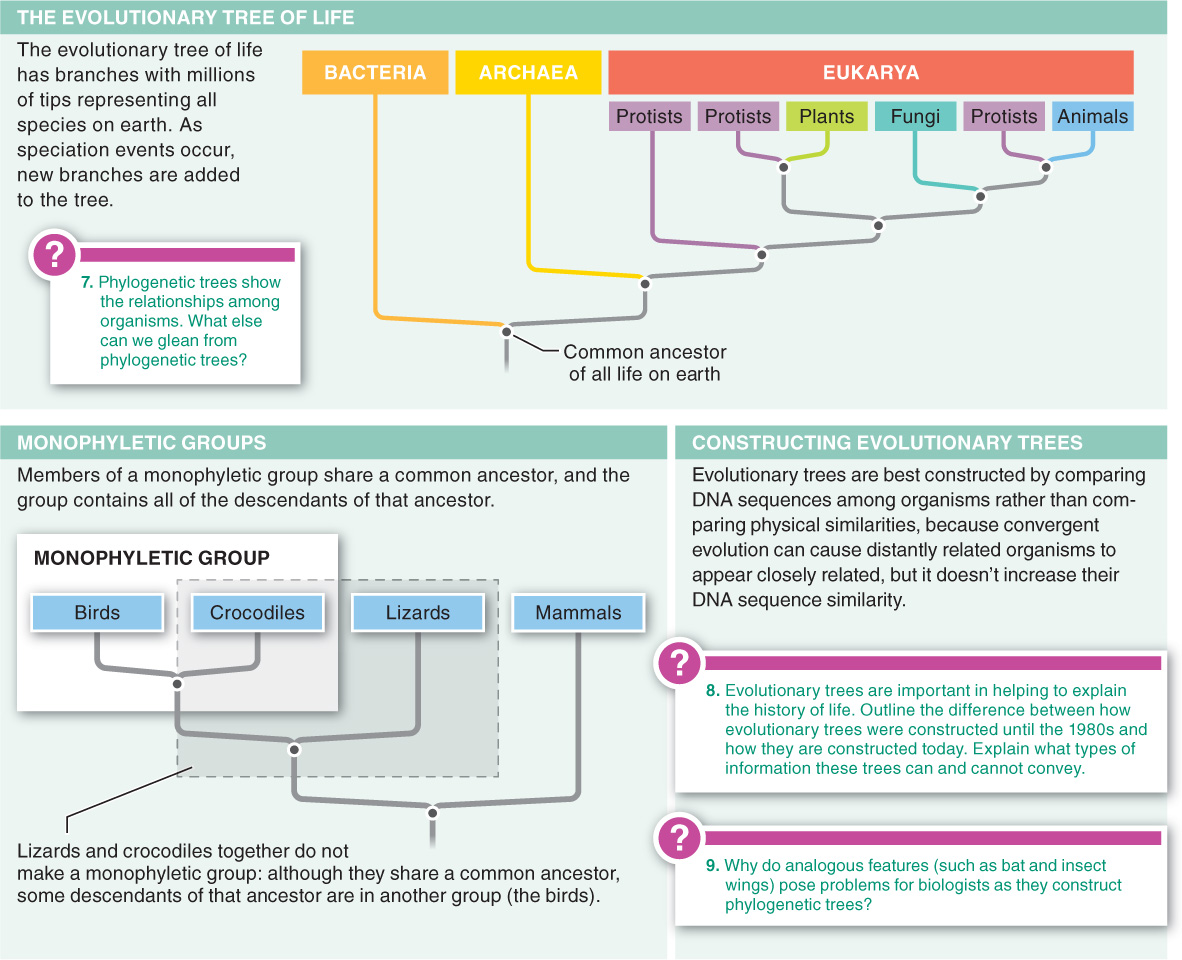10.8–10.10
10.8–Evolutionary trees help us conceptualize and categorize biodiversity.
Evolutionary trees reveal the evolutionary history of species and the sequence of speciation events that gave rise to them.

Q
Phylogenetic trees should be viewed as:
- a) true genealogical relationships among species.
- b) the result of vertical, but never horizontal, gene transfer.
- c) intellectual exercises, not to be interpreted literally.
- d) representations of allopatric speciation events.
- e) hypotheses regarding evolutionary relationships among groups of organisms.

The difference between microevolution and macroevolution is that:
- a) macroevolution takes place over long periods of time, whereas microevolution takes place over relatively short periods.
- b) macroevolution occurs with physical structures, whereas microevolution occurs with physiological traits.
- c) microevolution occurs with physical structures, whereas macroevolution occurs with physiological traits.
- d) microevolution has been proven, whereas macroevolution is very speculative.
- e) microevolution occurs in prokaryotes, whereas macroevolution takes place among eukaryotes.

The idea of punctuated equilibrium challenges which component of Darwin’s theory of evolution?
- a) steady change
- b) gradualism
- c) species stasis
- d) Both a) and b) are correct.
- e) None of the above are correct.

Which of the following scenarios would best facilitate adaptive radiation?
- a) A population of birds native to an island archipelago is forced to relocate to the mainland by a storm.
- b) A population of cheetahs goes through an event in which all genetic diversity in the population is wiped out.
- c) Darker-
colored moths have a selective advantage over lighter- colored moths due to industrial soot on trees. - d) A population of birds becomes stranded on an island archipelago.
- e) All of the above are equally likely to facilitate adaptive radiation.
